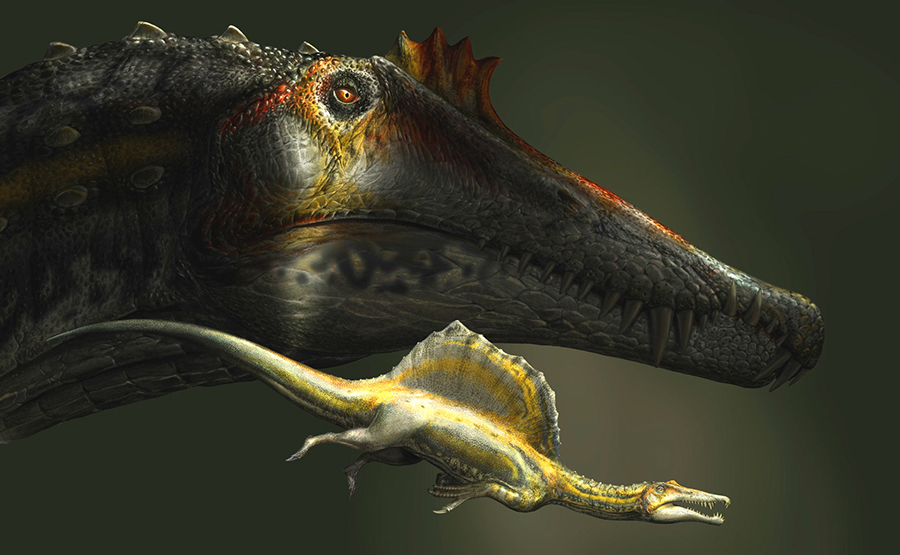Paleontologists Find Fossil of Smallest Spinosaurus

A tiny fossil of an early juvenile Spinosaurus has been discovered by a duo of Italian paleontologists.
Spinosaurus (meaning ‘spine lizard’) was the longest, and among the largest of all known predatory dinosaurs, and possessed many adaptations for a semiaquatic lifestyle.
It lived in what is now North Africa during the Cretaceous period, between 112 and 93.5 million years ago.
The new specimen — the 21 mm-long pedal ungual phalanx (a phalanx supporting a claw of the foot) — is from the smallest known individual of this giant, sail-backed dinosaur.
It was discovered in 1999 in the Kem Kem Beds of Tafilalt region, south-eastern Morocco.

“This specimen remained unnoticed until the recent discovery of a partial skeleton of Spinosaurus aegyptiacus that preserves an almost complete right foot with peculiar morphology in the phalanges,” said Milan Natural History Museum paleontologists Simone Maganuco and Cristiano Dal Sasso.
“The striking similarities with the claw phalanges of the Spinosaurus foot allowed us to identify the tiny bone to a very small and young specimen of this dinosaur, the smallest individual reported up to today.”
“The small specimen retains the same locomotor adaptations as the large version — such as traversing soft substrates or paddling — during the entire lifespan,” they added.

“This find indicates that in Spinosaurus, the foot of early juveniles had the same locomotor adaptations observed in large individuals, that were probably achieved early in ontogeny and retained for the entire lifespan,” Dr. Dal Sasso said.
“Besides the rarity of the fossils belonging to juvenile theropod dinosaurs, and the rarity of Spinosaurus bones, this finding is even more remarkable if we consider the dramatic size attained by some large specimens of Spinosaurus,” Dr. Maganuco added.
“Assuming the juveniles looked like smaller versions of the adults, the 21 mm-long claw phalanx from this small specimen would pertain to an early juvenile individual, 1.78 m-long, only just a little bit longer than the estimated length of the sole head of the largest adult Spinosaurus known to date,” the plaeontologists said.
The study was published online this week in the journal PeerJ.
_____
S. Maganuco & C. Dal Sasso. 2018. The smallest biggest theropod dinosaur: a tiny pedal ungual of a juvenile Spinosaurus from the Cretaceous of Morocco. PeerJ 6: e4785; doi: 10.7717/peerj.4785
Source: www.sci-news.com








